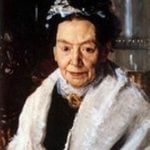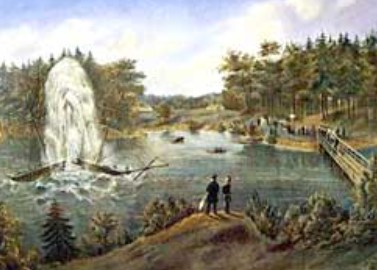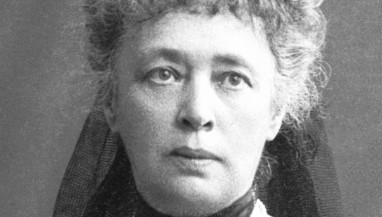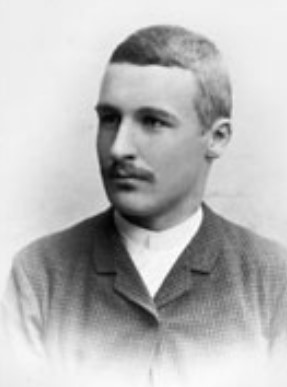Alfred Nobel Age, Death, Wife, Biography
Quick Info→
Age: 63 Years
Hometown: Stockholm, Sweden
Father: Immanuel Nobel
| Bio/Wiki | |
|---|---|
| Full Name | Alfred Bernhard Nobel |
| Profession(s) | Chemist, Engineer, Inventor, Businessman |
| Famous for | Being the benefactor of the Nobel Prize and inventor of dynamite |
| Physical Stats & More | |
| Eye Colour | Grey |
| Hair Colour | Salt and Pepper |
| Career | |
| Award | John Fritz Medal (1910) |
| Patent(s) | • Immanuel Nobel • Andriette Nobel |
| Personal Life | |
| Date of Birth | 21 October 1833 (Monday) |
| Birthplace | Stockholm, Sweden |
| Date of Death | 10 December 1896 |
| Place of Death | Sanremo, Italy |
| Age (at the time of death) | 63 Years |
| Death Cause | Heat attack |
| Zodiac sign | Sagittarius |
| Signature |  |
| Nationality | Swedish |
| Hometown | Stockholm, Sweden |
| School | Jacobs Apologistic School in Stockholm, Sweden (1841-1842); he was then taught at home. |
| Educational Qualification(s) | • A Swedish tutor 'Lars Santesson' taught him Swedish, History, World Literature, and Philosophy. • A Russian teacher 'Ivan Peterov' taught him fundamentals of Physics, Chemistry, and Mathematics. • Professors 'Yuli Trapp' and Nikolai 'N. Zinin' taught him Chemistry. |
| Religion | Atheist [1]The Nobel Prize |
| Ethnicity | Swedish |
| Controversy | He was often denoted as 'Merchant of death' by some French newspapers. [2]Live Science |
| Relationships & More | |
| Marital Status (at the time of death) | Unmarried |
| Affairs/Girlfriends | • Alexandra (a Russian girl) • Bertha von Suttner (a Czech-Austrian pacifist and novelist)  • Sofie Hess (a private employee from Vienna) |
| Family | |
| Wife/Spouse | N/A |
| Parents | Father- Immanuel Nobel (inventor) Mother- Caroline Andrietta Ahlsell  |
| Siblings | Brothers- 3 • Ludvig Nobel (inventor)  • Robert Nobel (inventor)  • Emil Oskar Nobel  Sister- Betty Carolina Nobel |
| Favourite | |
| Subject | Chemistry |
| Money Factor | |
| Net Woth | After his death, his net worth was calculated approximately at 31 million Swedish krona, which was equal to more than £126 million ($157 million). [3]Readly |
Some Lesser Known Facts About Alfred Nobel
- Alfred Nobel had 8 siblings. He was the third son of his parents; however, only Alfred Nobel and his 3 brothers survived past childhood.
- He was a descendant of Olaus Rudbeck (a Swedish scientist and writer).
- Alfred Nobel became interested in engineering (especially explosives) at a young age. He then began learning the basic principles of engineering from his father.
- His mother belonged to a wealthy family.
- After his father’s business failed in Stockholm, he moved to Saint Petersburg in 1837. His mechanical workshop began providing equipment for the Russian army and became a successful manufacturer of explosives and machine tools and designing steam engines.
- His father, Immanuel Nobel, invented modern plywood and started working on the torpedo. Immanuel convinced the generals of Tsar that naval mines could block enemy ships from threatening the city.
- When he was young, Alfred Nobel studied with a renowned chemist Nikolai Zinin.
- He attended Jacobs Apologistic School in Stockholm, from 1841 to 1842, the only school he ever attended.
- When he was seventeen, he was fluent in Swedish, Russian, French, English and German.
- His father wanted him to join his business; however, he liked English literature, poetry, chemistry, and physics.
- Immanuel Nobel sent Alfred abroad for further training in chemical engineering. Alfred visited Sweden, Germany, France and the United States for two years. He worked in the private laboratory of Professor T. J. Pelouze, a famous chemist, in Paris.
- In 1850, Alfred Nobel went to Paris to continue his studies. There, he met Ascanio Sobrero, who had created nitroglycerin.
- Sobrero was worried about nitroglycerin because it could explode unexpectedly. However, Nobel saw potential in it as a powerful explosive.
- In 1851, when Alfred Nobel was 18 years old, he went to the United States for a year to learn Chemistry and worked there with inventor John Ericsson.
- In 1852, Alfred Nobel was asked to return and work for his family’s business which was flourishing due to its arms deliveries to the Russian army. He, along with his father, conducted experiments to develop nitroglycerine as a commercially and technically useful explosive.
- In the Crimean War (1853-1856), a large amount of armaments was supplied by his family factory.
- After the war ended, Immanuel Nobel declared bankruptcy. Immanuel, along with two of his sons, Alfred and Emil, left St. Petersburg and returned to Stockholm. His other two sons, Robert and Ludvig, stayed in St. Petersburg.
- After that, they managed to rescue their family business and went on to develop the oil industry in the southern part of the Russian empire. Their success led them to become some of the wealthiest individuals of their time.
- Alfred Nobel spent much time travelling for work as he had businesses in Europe and America. He lived in Paris from 1873 to 1891.
- During his time in Paris, Nobel was a Lutheran and regularly prayed at the Church of Sweden Abroad. Nobel became an atheist later in life.
- In 1857, Alfred Nobel filed his first English patent for a gas meter.
- In 1859, his father gave the business to Nobel’s brother Ludvig, who worked hard to prosper it. Nobel then focused on explosives and invented many safer ways to handle them.
- After returning to Sweden from Russia, Alfred Nobel devoted his time to studying explosives (especially to the safe use and manufacture of nitroglycerin).
- In 1863, Alfred Nobel invented a detonator.
- On 3 September 1864, five people, including Nobel’s younger brother Emil, were killed in a nitroglycerin explosion at his factory in Heleneborg, Stockholm, Sweden.
- After that, he started his own company Nitroglycerin AB in Vinterviken to work on explosives in a safer area.
- In 1865, he invented a blasting cap.
- From 1865 to 1873, he lived in Krümmel (now part of the municipality of Geesthacht, near Hamburg).
- In 1867, Alfred Nobel invented dynamite, which was easier to use and safer than nitroglycerin. It became widely used in mining and construction.
- He mixed Nitroglycerin with an absorbent inert substance that became safer and patented this mixture in 1867 as ‘Dynamite.’
- In 1873, Alfred Nobel moved to a house on Avenue Malakoff in Paris.
- In 1875, he invented gelignite, which was more stable and powerful than dynamite.
- After being recognized for his contributions to the scientific field, Alfred Nobel became a member of many prestigious scientific organizations and earned many honours from noted universities.
- He generated huge wealth from his inventions and his investments in oil companies.
- Alfred Nobel never married, but he was in a relationship with three women. One, Alexandra, a Russian girl, denied his marriage proposal. Another, Bertha Kinsky, worked for him briefly before marrying someone else but stayed in touch with him until he died. Sofija Hess, whom Nobel met in 1876, was his longest relationship that lasted for 18 years.
- He was feeling like an old man at the age of 43. He had no private life as he had to work and travel a lot. In 1876, he advertised in a newspaper,
Wealthy, highly-educated elderly gentleman seeks lady of mature age, versed in languages, as secretary and supervisor of household.”
- He invented ballistite in 1887.
- In 1884, Alfred Nobel was elected a member of the Royal Swedish Academy of Sciences.
- During his life, Alfred Nobel established more than ninety armament factories and issued 355 international patents.
- In 1888, Alfred Nobel’s brother Ludvig passed away. Some newspapers mistakenly published obituaries about Alfred instead. A French obituary wrote Le Marchand de la mort est mort (The merchant of death is dead).
- One of these obituaries criticized Alfred for inventing explosives used in wars, which upset him. He then decided to change how he would be remembered after he died. He planned to leave most of his wealth to establish the Nobel Prize.
- In 1891, Nobel moved from Paris to Sanremo, Italy, as he was accused of betraying France for selling Ballistite to Italy.
- In 1893, Uppsala University gave him an honorary doctorate.
- In 1894, he began living in Björkborn Manor in Bofors-Gullspång, an arms industry company, in Sweden. He spent his summers at this mansion, which became his last residence in the country and became a museum after his death.
- Alfred Nobel signed his last will on 27 November 1895 and left his huge estate (94% of his total assets; equivalent to 31225000 Swedish Kronor) to establish the 5 Nobel Prizes.
- These prizes were for achievements in science, chemistry, medicine, literature, and promoting peace.
- The part about the literature prize being for work “in an ideal direction” was confused for a long time. Some thought it meant only idealistic writing, but later it was interpreted differently.
- This allowed the prize to be given to a wider range of authors.
- His will does not mention how the prizes for science and chemistry should be awarded, since he did not consult anyone before writing his will. This led to more scientists winning the prizes than engineers or other inventors.
- On 10 December 1896, he had a stroke that left him partly paralyzed and only able to speak in his language. When he died, he was surrounded by his servants.
- After his death, the executors of Alfred Nobel’s will were two young engineers named Ragnar Sohlman and Rudolf Lilljequist. They established the Nobel Foundation as an organization to manage the financial assets left by Alfred and coordinate the work of the Prize-Awarding Institutions.
References/Sources:

























